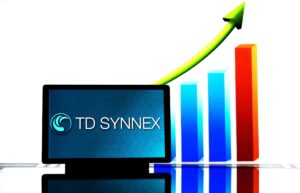TD Synnex Reports Disappointing Earnings: What Investors Need to Know
In the competitive landscape of IT product distribution, TD Synnex (SNX) recently experienced a significant downturn, causing shares to plummet by 17% on a single trading day. This sharp decline came in response to the company’s less-than-stellar quarterly earnings and future guidance, prompting investors and market analysts to reassess its position in the industry.
An Overview of Earnings
TD Synnex reported an adjusted earnings per share (EPS) of $2.80 for the fiscal 2025 first quarter. While revenue showed a year-over-year increase of 4% to reach $14.53 billion, this still fell short of analyst expectations set by Visible Alpha. Notably, the company’s gross profit also dipped, declining almost 1% to $998 million, with the gross margin further contracting by 33 basis points to 6.87%.
These figures are key temperature checks for the performance of TD Synnex in the current market environment. It’s important for investors to monitor not only the absolute numbers but also the trends. The decline in gross profit and margin indicates potential challenges in cost management and pricing power.
Rising Costs Impacting Profitability
Discerning the reasons behind this earnings miss boils down to an increase in operating expenses. Selling, general, and administrative expenses (SG&A) rose by 3% to $692.5 million, while the interest expense and finance charges surged 16% to $87.9 million. Rising costs can often signal trouble within technology firms, especially when they outpace revenue growth.
For investors actively monitoring TD Synnex, understanding these operational levers is critical. With operating expenses rising, the company may need to rethink its cost-control strategies to preserve margins.
Future Outlook: A Conservative Guidance
The company expects adjusted EPS for the current quarter to be in the range of $2.45 to $2.95, alongside revenue projections of $13.9 billion to $14.7 billion. These estimates are notably below the analyst consensus forecast of $3.02 and $14.7 billion, respectively. Such conservative guidance often serves as a red flag for existing and potential investors, suggesting that management is preparing for a challenging quarter ahead.
Investors should keep an eye on competitor performance during the same period, as it can provide insight into whether the challenges faced by TD Synnex are industry-wide or specific to the company.
Market Response and Implications
In reaction to the disappointing results, TD Synnex shares have fallen to their lowest levels in over a year. For investors, this creates a pivotal moment to evaluate whether the stock presents a buying opportunity at a lower valuation or if it poses additional risks going forward.
This decline may prompt those interested in long-term investment strategies to dig deeper into the company’s fundamentals. Factors such as cash flow, debt levels, and management initiatives should be analyzed thoroughly before making any investment decisions.
A Call to Investors
In a time where information is abundant, discerning actionable insights can set successful investors apart from the crowd. At Extreme Investor Network, we encourage you to look beyond the numbers. Is the current environment one where TD Synnex can adapt, innovate, and regain its competitive edge? As you evaluate your investment thesis, consider the broader technology sector dynamics, potential shifts in consumer demands, and the company’s strategic response to rising costs.
In conclusion, while TD Synnex’s recent earnings report has shown vulnerabilities, the company’s response and future positioning will be key to its recovery trajectory. Investors must remain vigilant and informed as they navigate through the intricacies of the IT distribution landscape.

